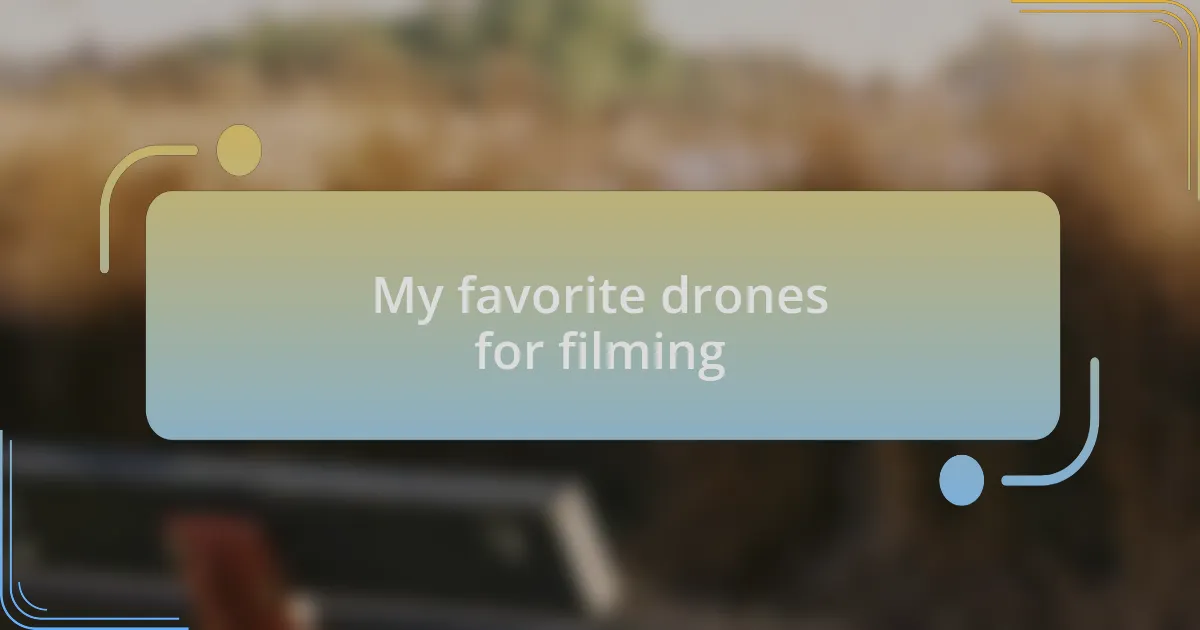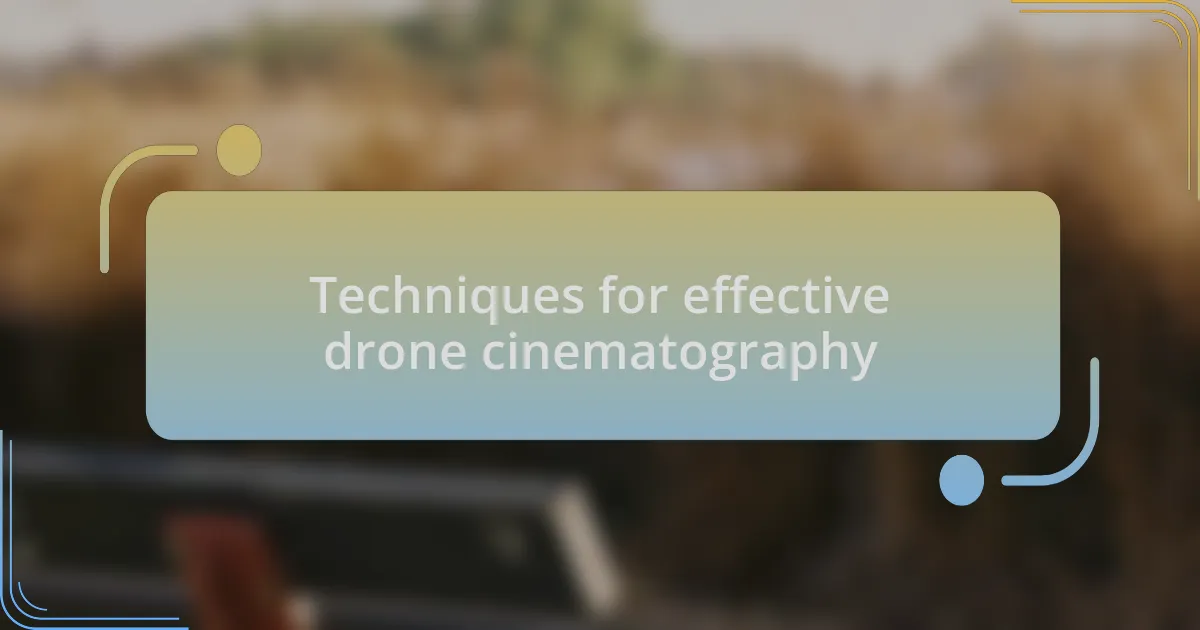Key takeaways:
- The DJI Mavic Air 2 excels in 4K video quality and long flight time, enhancing filming experiences.
- Effective drone cinematography relies on techniques like slow movement, consistent altitude, and incorporating foreground elements for depth.
- Regular maintenance, including visual inspections and cleaning, is crucial for drone longevity and optimal performance.
- Staying updated with firmware can significantly improve functionality and safety during flights.

My favorite drones for filming
One of my all-time favorite drones for filming is the DJI Mavic Air 2. I remember the first time I used it during a stunning sunrise shoot. The 4K video quality and impressive flight time of up to 34 minutes made capturing those early morning light rays truly magical. Have you ever experienced that moment when the drone glides perfectly into frame? It feels like you’re composing a living painting.
Another incredible option is the Autel Robotics EVO Lite+. I was blown away by its low-light performance during a nighttime shoot in the city. Standing on that rooftop, watching the lights shimmer, I felt as if I were taking a peek into a whole new world. The ability to capture crisp footage in less-than-ideal lighting conditions is something every filmmaker yearns for, don’t you think?
Lastly, I absolutely cannot overlook the DJI Phantom 4 Pro. The first time I flew it over a scenic landscape, the quality and stability of the footage had me grinning from ear to ear. Its obstacle avoidance feature gave me the confidence to push my creative boundaries. In that moment, I realized just how empowering the right equipment can be, igniting a deeper passion for capturing the world from above.

Techniques for effective drone cinematography
When it comes to effective drone cinematography, mastering the art of movement is crucial. I recall a project where I utilized slow, sweeping shots to evoke a sense of serenity over a picturesque lake. It’s amazing how subtle motions can transform ordinary scenes into cinematic masterpieces, don’t you think? The way the landscape unfolds gracefully beneath the drone creates a captivating narrative flow.
Another technique that I often emphasize is maintaining a consistent altitude. During a recent shoot in the mountains, I focused on keeping the drone at a steady height while panning across the horizon. This not only resulted in uniformity in shots but also made the landscape appear vast and expansive. Have you ever noticed how different altitudes can alter the mood of your footage? It’s remarkable how a few feet can make a world of difference.
Finally, I find that incorporating foreground elements can greatly enhance depth in drone shots. For example, during a coastal shoot, I flew the drone to capture waves crashing against the rocks while highlighting a distant lighthouse. This layering effect added context and drama to the narrative. Isn’t it fascinating how the right framing can pull viewers into the scene, making them feel as if they are part of the experience? Engaging your audience through composition is something every filmmaker should strive to achieve.

Tips for maintaining your drone
Maintaining your drone is essential for ensuring its longevity and performance. One of my go-to tips is to perform regular visual inspections before every flight. I remember a time I overlooked a small crack in a propeller, thinking it was just a scuff. That flight ended in a crash, teaching me that even minor issues can lead to major mishaps. Have you ever experienced a breakdown that could have been avoided with a quick check?
I also recommend cleaning your drone after each use, especially if you’ve been flying in dusty or moist environments. I learned this lesson the hard way during a shoot in a foggy region when moisture had built up around the camera gimbal. Not only did it affect my shots, but it also created a risk of permanent damage. Trust me, a soft brush and a microfiber cloth can go a long way in preserving your gear. How often do you clean your equipment?
Finally, investing in firmware updates is crucial for keeping your drone in tip-top shape. I vividly recall a situation where a new update added features that dramatically improved my drone’s stability during windy conditions—something I had struggled with in the past. Staying current with updates not only enhances functionality but also often includes safety improvements. Have you thought about how much performing updates could optimize your flying experience?